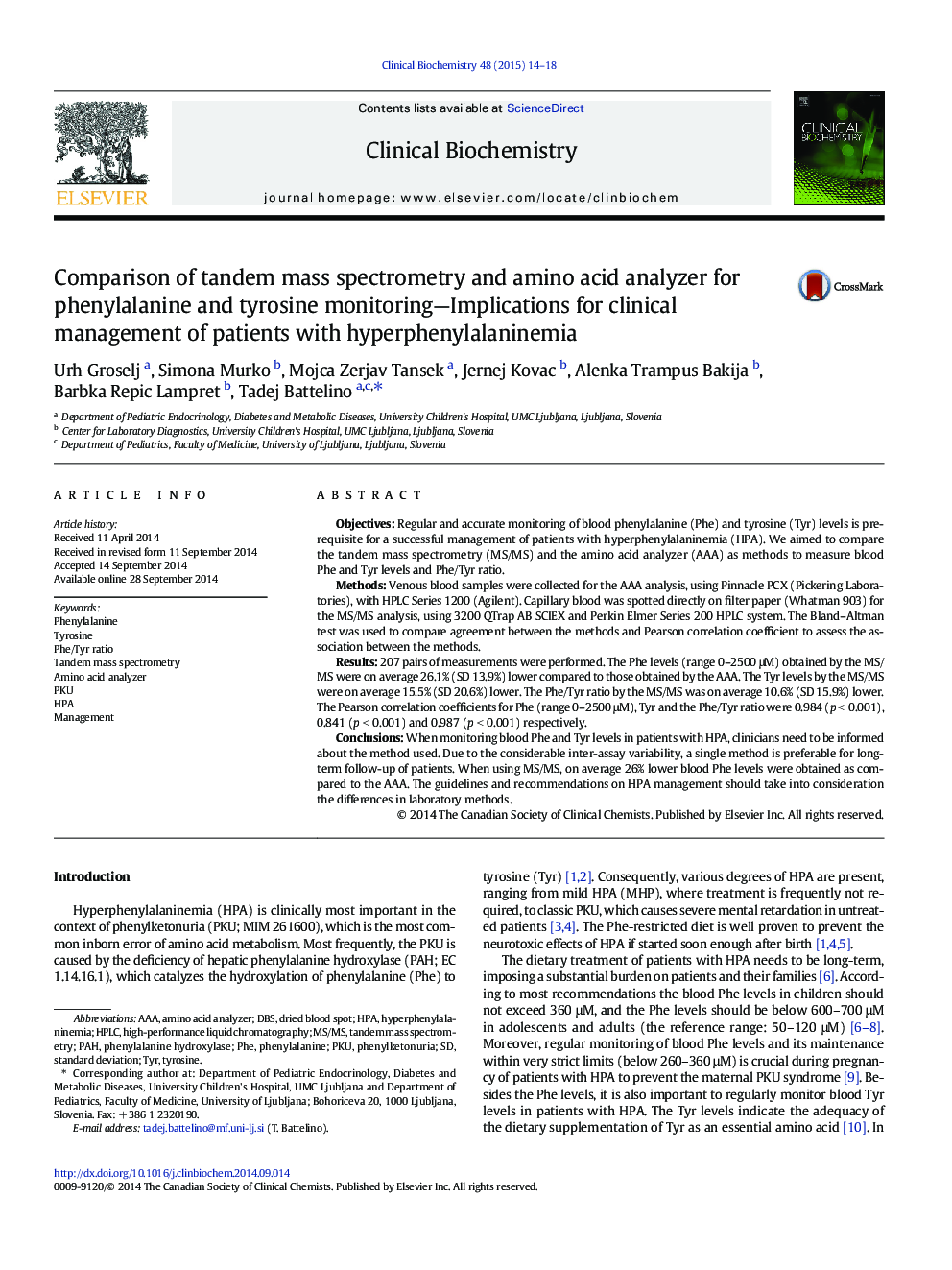| کد مقاله | کد نشریه | سال انتشار | مقاله انگلیسی | نسخه تمام متن |
|---|---|---|---|---|
| 1969045 | 1538870 | 2015 | 5 صفحه PDF | دانلود رایگان |
• Tandem mass spectrometry (MS/MS) and amino acid analyzer (AAA) were compared as methods to measure blood Phe and Tyr levels;
• 207 pairs of measurements were performed; the Phe levels obtained by the MS/MS were on average 26.1% lower and the Tyr levels were on average 15.5% lower as compared to the AAA;
• The inter-method difference could have implications for diagnosis and clinical management of HPA patients.
ObjectivesRegular and accurate monitoring of blood phenylalanine (Phe) and tyrosine (Tyr) levels is prerequisite for a successful management of patients with hyperphenylalaninemia (HPA). We aimed to compare the tandem mass spectrometry (MS/MS) and the amino acid analyzer (AAA) as methods to measure blood Phe and Tyr levels and Phe/Tyr ratio.MethodsVenous blood samples were collected for the AAA analysis, using Pinnacle PCX (Pickering Laboratories), with HPLC Series 1200 (Agilent). Capillary blood was spotted directly on filter paper (Whatman 903) for the MS/MS analysis, using 3200 QTrap AB SCIEX and Perkin Elmer Series 200 HPLC system. The Bland–Altman test was used to compare agreement between the methods and Pearson correlation coefficient to assess the association between the methods.Results207 pairs of measurements were performed. The Phe levels (range 0–2500 μM) obtained by the MS/MS were on average 26.1% (SD 13.9%) lower compared to those obtained by the AAA. The Tyr levels by the MS/MS were on average 15.5% (SD 20.6%) lower. The Phe/Tyr ratio by the MS/MS was on average 10.6% (SD 15.9%) lower. The Pearson correlation coefficients for Phe (range 0–2500 μM), Tyr and the Phe/Tyr ratio were 0.984 (p < 0.001), 0.841 (p < 0.001) and 0.987 (p < 0.001) respectively.ConclusionsWhen monitoring blood Phe and Tyr levels in patients with HPA, clinicians need to be informed about the method used. Due to the considerable inter-assay variability, a single method is preferable for long-term follow-up of patients. When using MS/MS, on average 26% lower blood Phe levels were obtained as compared to the AAA. The guidelines and recommendations on HPA management should take into consideration the differences in laboratory methods.
Journal: Clinical Biochemistry - Volume 48, Issues 1–2, January 2015, Pages 14–18
